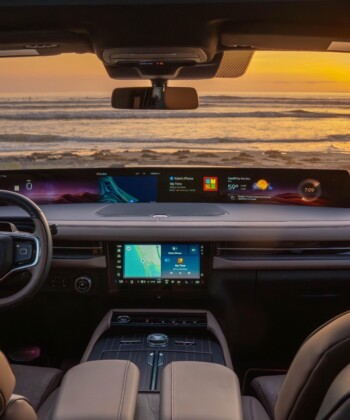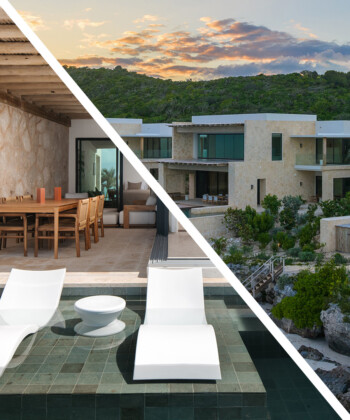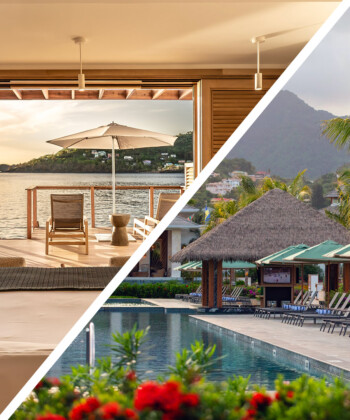In the spring of 1994, I was in my final weeks of high school when nearly a million people died in one of history’s most brutal genocides, 100 days of machete and gunfire attacks as friends and neighbors turned on one another in the Hutu majority’s efforts to eradicate the Tutsi minority. While my friends and I went to prom and graduation parties and never questioned our good fortune, Rwandan Patrick Rutayitera, also 17 that year, was living as a refugee in the Democratic Republic of the Congo—then Zaire—wondering if he’d ever return to Rwanda, if there would be a Rwanda to return to.
Rutayitera recalls those years as he weaves our military green Land Cruiser through the streets of Kigali, the Rwandan capital since 1962. When he talks about the genocide, he does so reluctantly, although as a professional tour guide for Rwanda-based Primate Safaris he’s hardly ever had a group that isn’t curious: what life was like back then, how a country so shattered was able to find reconciliation so quickly, how everyone gets along now. His answers are diplomatic, careful and—probably not all that surprising—delivered somewhat stoically. Over the seven days we spend with him, he never once uses the word genocide, instead referring to “what happened in 1994,” which itself says a lot about how the country, and its people, have approached recovery.
Rwanda, today, is a tightly controlled country of about 12 million people packed into a land area roughly the size of the state of Maryland. Some might say that peace here has come at the hands of dictatorship. It’s illegal to talk about ethnicity—there are no Hutus or Tutsis anymore, only Rwandans. Free speech is limited, particularly in the press. Nevertheless, Rwandans are friendly and welcoming, and no one contests that the country, under the leadership of president Paul Kagame since 2000, is now an exceptionally safe, and exceptionally beautiful, place to live and visit. The Kigali capital is well lit, modern and clean (also illegal: plastic bags). The roads are good. There is more money, and opportunity, to go around; gender equality has increased (women hold 64 percent of seats in the Rwandan parliament); and the economy has prospered from three big trades: coffee, tea and tourism.
As one of only three countries in the world where you can see the endangered mountain gorilla—the others are Uganda and the Democratic Republic of Congo, and you only see them in the wild; none survive in captivity—Rwanda has always had something unique to offer adventurous travelers, though it hardly ever represented anyone’s first or only destination in Africa, with the most obvious choices the ones that could offer big-game watching, like South Africa, Kenya and Zimbabwe. But since 2003, Kagame, through the Rwanda Development Board (RDB), has worked hard to earn Rwanda a place in travelers’ itineraries as more than a stopover for gorillas, with a focus on high-value, low-environmental-impact tourism that capitalizes on the country’s many other attractions, such as beautiful landscapes, exotic birds and dozens of varieties of primates and other animals. It’s an effort bolstered by an influx of upscale lodging offerings and easy direct flights to Kigali from a number of cities, including Amsterdam, Brussels and Istanbul, as well as Dubai, which has invested millions in Rwandan tourism projects. Meanwhile, 5 percent of the income generated by tourism goes directly into communities around the country, with larger portions going to those surrounding the national parks, which benefit from an increase in employment opportunities as well. All hikes must be permitted and are led by trained guides.
Ricus De Beer, the East Africa specialist at safari outfitter andBeyond, says the company’s client requests for Rwanda are up, and he’s more than happy to support what he describes as Rwanda’s efforts to build a tourism business based on “sustainable, feasible, meaningful impact, with care of wildlife, care of land and care of people.” One of the RDB’s biggest projects has been the rebuilding of Akagera National Park into the full safari destination it once was before the genocide left the animals vulnerable to poachers, who wiped the park clean. Last summer, under the direction of Africa Parks, andBeyond contributed from its Phinda Private Game Reserve in South Africa five of Akagera’s seven new lions. Rhinos are scheduled to arrive sometime this year. While Akagera may never compare to Kenya’s Masaai Mara or South Africa’s Kruger National Park in terms of scale, its diverse variety of landscapes and animals—savannah plains, wetlands, rolling hills and growing numbers of hippos, giraffes, elephants, lions and zebra—means travelers no longer have to choose between the bush and the rainforest. Rwanda, now, has both.
Though many hotels and tour outfitters, including Primate Safaris, offer helicopter charters between our three primary destinations—Volcanoes National Park and the Virunga massif, home of the mountain gorilla, in the northwest; Nyungwe Forest in the southwest; and Akagera in the northeast—Rwanda’s compact size means it’s drivable, and it’s a drive that’s worthwhile. Rwanda lives up to its nickname as the Land of a Thousand Hills, and much of the famously fertile land is cultivated, part of the government’s plan to move the country from subsistence to a commercial mode of production. This makes for a spectacularly scenic journey, hill after rolling emerald green hill of tea leaves, banana groves and coffee gardens. And people; lots of people. Rwandans get around mostly by foot, and a typical roadside view might include uniformed children walking between home and school, women in colorful headscarves selling woven baskets or barbecued goat brochettes, people of all ages pushing bicycles loaded with just about anything: stalks of bananas, bags of coffee or, on Friday afternoons especially, giant canisters of urwagwa, or banana beer, a sort of Rwandan moonshine.
About four hours from Kigali, Nyungwe Forest National Park—our first stop—is Africa’s largest mountain rainforest, and one of its oldest and most protected, home to 260 species of trees, over 100 species of orchids, more than 275 species of birds and 13 different kinds of primates—chimpanzees, blue monkeys and colobus monkeys, who will peer at you without shame from the trees outside your hotel window. The place to stay is the Nyungwe Forest Lodge, a 22-room property made up of sleek glass and wooden bungalows, set on a working tea plantation. Built by Dubai developers and now part of the South Africa–based Newmark Hotel collection, the lodge features impeccable design, dining that offers a refined take on local cuisine (Rwandan food is simple but satisfying; there will be sweet potatoes and plantains on nearly every plate) and an extensive wine list featuring African wines. Still, the focus is most definitely on what you’ll do outside the hotel. Days revolve around guided treks along well-maintained trails into the lush and green and impossibly enormous cloud forest to see chimpanzees, birds or waterfalls, ranging from an hour-long stroll across canopy bridges to a vigorous seven-hour climb through thick brush. The lodge also coordinates visits to the nearby tea factory, where you can watch the process of tea cultivation, from cutting, fermentation and drying to sorting, storing and packing. Breakfast is served on a veranda overlooking the tea fields, where workers spend the mornings plucking leaves and tossing them, swiftly and gracefully, into straw baskets at their backs.
The drive from Nyungwe to Ruhengeri, a former Belgian colony at the foothills of the Virunga volcanoes—which span the borders of Rwanda, Uganda and the DRC—is considerably longer, and not entirely paved. At the same time, it offers some of the week’s best landscapes and people-watching, if really understanding Rwanda is at least part of the point, and it should be. One of the more memorable pit stops along that particular drive was in Lake Kivu, where the steep, green terraced hills and colonial-era houses of one of the African Great Lakes overlook a particularly dizzying border post between Rwanda and the DRC, through which more than 10,000 people cross, on foot, every day.
Ruhengeri serves as the base camp for those who come to Rwanda for gorilla trekking, though we stayed at Virunga Lodge, about a half hour (and 2,300-meter) drive up-mountain, above twin lakes Ruhondo and Bulera, with misty views of the Virunga volcanoes. The eco-chic lodge was renovated in 2013 and runs on solar power and charm: rustic but comfortable bandas featuring private verandas, a personal butler who’ll arrive for your 4 a.m. wake-up call (with plenty of strong coffee), nightly performances by local dance troupes and communal dining in a cheery, fire-lit main space that encourages even the most anti-social travelers to share their stories of the day.
Gorillas may no longer be the primary attraction in Rwanda (and one of Ruhengeri’s other highlights is the endangered golden monkey), but they remain the undisputed stars of the show—as well as the stars of the tourist business here. The number of visitors to Volcanoes National Park exceeded 20,000 in 2014, almost three times the number a decade earlier. Foreigners pay $750 per person per day for a permit (Rwandans pay $40) and most of that fee goes towards conservation efforts and fighting against poaching, which have together helped grow the worldwide gorilla population—which at one time was less than a few hundred—to close to 1,000.
For this reason, keeping the gorillas healthy—and just socialized enough—is essential. The RDB is not greedy in its tourism, even if it could be, allowing only 80 visitors a day to trek through Volcanoes. In addition, visitors are limited to spending just one hour in the presence of a gorilla family. There are currently 10 families available to be visited by hikers, including the Susa family, made famous as the group studied by conservationist Dian Fossey, and each group will include at least one silverback, also known as the guy in charge.
There are a few rules for everyone’s safety: Stay 23 feet from the gorillas if you can help it (the gorillas don’t always abide); never touch them, even when the babies seem irresistibly huggable (and they will); never look a silverback in the eye, which could be interpreted as an act of aggression. Don’t point—even gorillas think that’s rude. Guides travel with machetes (mostly for clearing bush) and just-in-case rifles, though all hike leaders are trained to recognize agitation or other dangers, and can communicate with gorillas using a number of oral prompts that sound like grumbles (“good morning,” “we’re friendly,” “keep your distance,” “we’ll be leaving now,” and so on).
Our group of six—four Americans and two Russians—trekked for about an hour to reach Pablo, our family’s namesake silverback, and his brood of 36, which included two other silverbacks and a whole bunch of babies that moved around far too much to attempt to count. The hike—through thick forests of bamboo, nettles and vines—was challenging at times, but not exhausting, with no sign of gorillas until, suddenly, through a thicket and without much warning, an explosion of furry black masses: sitting, rolling, walking, running, swinging from branches, eating trees, posing, undeniably, for photos. They were at once imposing and very cute, familiar but also extraordinary, and completely secure with both their visitors and their place in the world. Lucky for you, they’ve decided to let you stop by.











































